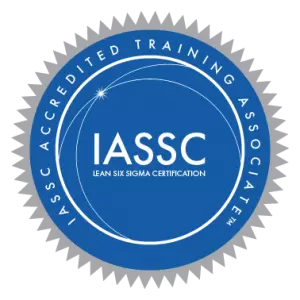
In today's highly competitive business landscape, organizations strive to deliver products and services of the highest quality while minimizing waste and errors. To achieve this, many organizations turn to methodologies such as Six Sigma. Six Sigma Green Belt certification offers individuals the opportunity to become proficient in process improvement techniques and contribute significantly to enhancing organizational quality.
Improving Quality with Six Sigma Green Belt Training
Six Sigma Green Belt training provides individuals with a comprehensive understanding of the tools and methodologies necessary to identify and eliminate defects, reduce variation, and improve overall quality within organizations. By applying the Define, Measure, Analyze, Improve, and Control (DMAIC) approach, Green Belts learn to identify opportunities for improvement, collect and analyze data, implement effective solutions, and sustain positive change. This structured and data-driven approach enables organizations to streamline processes, reduce errors, enhance customer satisfaction, and achieve operational excellence.
How Learning Six Sigma Green Belt is Beneficial for the Career?
Learning Six Sigma Green Belt is highly beneficial for one's career. This comprehensive training equips individuals with a deep understanding of process improvement methodologies and tools. By mastering Six Sigma principles, candidates develop the skills to identify and eliminate defects, reduce variation, and enhance overall quality within organizations. These skills are highly sought after in various industries, including manufacturing, healthcare, finance, and information technology.
Achieving Six Sigma Green Belt certification demonstrates a commitment to excellence and positions individuals as valuable assets to organizations striving for continuous improvement. Moreover, the knowledge and expertise gained through Six Sigma Green Belt training provide individuals with the confidence to lead projects, solve complex problems, and drive positive change within their organizations, leading to career growth and advancement opportunities.
Organizational Goals for Six Sigma Green Belt
Implementing Six Sigma Green Belt training within an organization aligns with several key goals. Firstly, it aims to improve process efficiency and effectiveness, allowing organizations to optimize resource utilization and reduce waste. By identifying and eliminating defects, organizations can enhance product and service quality, thereby increasing customer satisfaction and loyalty. Six Sigma Green Belt certification training also promotes a culture of continuous improvement and empowers employees at various levels to take ownership of process improvement initiatives. Furthermore, organizations benefit from increased productivity, cost savings, and enhanced competitiveness in the marketplace.
ISEL Global Offers the Best Six Sigma Green Belt Training
ISEL Global is a renowned provider of Six Sigma Green Belt training, offering comprehensive programs that empower individuals and organizations to achieve excellence. Their training is designed and delivered by experienced professionals who bring real-world insights and practical knowledge to the learning experience. The training combines theoretical concepts with hands-on exercises, case studies, and interactive discussions, ensuring participants grasp the material effectively. With flexible learning options, including in-person and online training, ISEL caters to diverse needs and schedules. By choosing ISEL Global for Six Sigma Green Belt training, individuals and organizations gain access to top-notch resources, expert guidance, and a supportive learning community.
Job Prospects after Completing Six Sigma Green Belt Certification After completing Six Sigma Green Belt certification, individuals unlock numerous job prospects across various industries. Some of the key roles and opportunities that await them include:
- Quality Engineer: As a Six Sigma Green Belt certified professional, you can pursue a career as a Quality Engineer.
- Process Improvement Manager: Organizations often hire Six Sigma Green Belt certified professionals to fill the role of Process Improvement Manager.
- Operations Analyst: With your Six Sigma Green Belt certification, you can work as an Operations Analyst, analyzing operational data, identifying areas of improvement, and developing strategies to optimize processes and reduce costs.
- Project Manager: Six Sigma Green Belt certification provides a strong foundation in project management methodologies, making it an excellent qualification for aspiring Project Managers.
- Continuous Improvement Consultant: Many organizations seek the expertise of Six Sigma Green Belt certified professionals to work as Continuous Improvement Consultants.
- Supply Chain Analyst: Supply chain management is crucial for organizations to optimize their processes and meet customer demands efficiently.
- Quality Assurance Manager: As a Six Sigma Green Belt certified professional, you can pursue a career as a Quality Assurance Manager.
In addition to these specific job roles, Six Sigma Green Belt certification enhances your marketability and opens doors to a wide range of opportunities across industries. You will possess the skills and knowledge to lead process improvement initiatives, drive change, and deliver measurable results, making you a valuable asset to organizations seeking to improve their quality standards.




